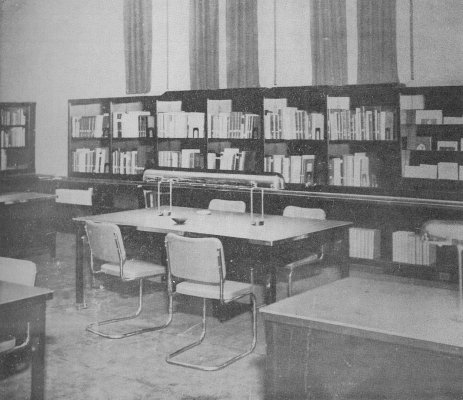The Albright Art Gallery had long needed a suitable place where visitors could sit down and rest comfortably after viewing exhibitions, where one could read art periodicals and books, and where students could refer to the catalogs and reference works. When Gordon B. Washburn became director of the museum in 1931, a small reference library was opened in the basement. This location proved efficient for research use by staff but was rather inaccessible for the visiting public.
In 1933, Seymour H. Knox, Jr., and his mother, Grace Millard Knox , generously provided the funds necessary for furnishing a new art library. The art library—established for use by museum staff, members of the Albright Art School, and the public—was located on the main floor of the 1905 Building in Gallery 16.
The new art reference library formally opened to Albright Art Gallery Members on October 11, 1933, and to the public on October 12. The library’s value and necessity were evinced by the large number of visitors who attended the event. In addition to serving as a key reference tool, the library was also one of the most striking and beautiful rooms in Buffalo. The library tables, desks, and stacks were made of black steel, and ornamented with of flashing chromium steel in horizontal bands. There were metal indirect-lighting fixtures on each desk and table, tubular metal chairs with brilliant tomato-red leather seats and backs, red curtains, a deep coffee-colored carpet, and cream colored walls. All these elements, designed with the simplicity and boldness of the modern approach, were combined in an interior which successfully harmonized with the conservative architecture of the museum.
The collection of books in the new library grew from loans and gifts by many public-spirited Buffalonians. At that time, the library comprised 1,400 volumes, including reference works, current and bound volumes of art periodicals, catalogues, year books and bulletins of the leading art galleries in the United States and Europe, catalogues of the great private collections, and sales catalogs from many major art dealers. Occasionally, purchases of recent books were made by the museum, avoiding as far as possible duplication of those volumes held at the Buffalo Public Library and Grosvenor Research Library.
For more historical information, visit the Albright-Knox's channel on Historypin.
